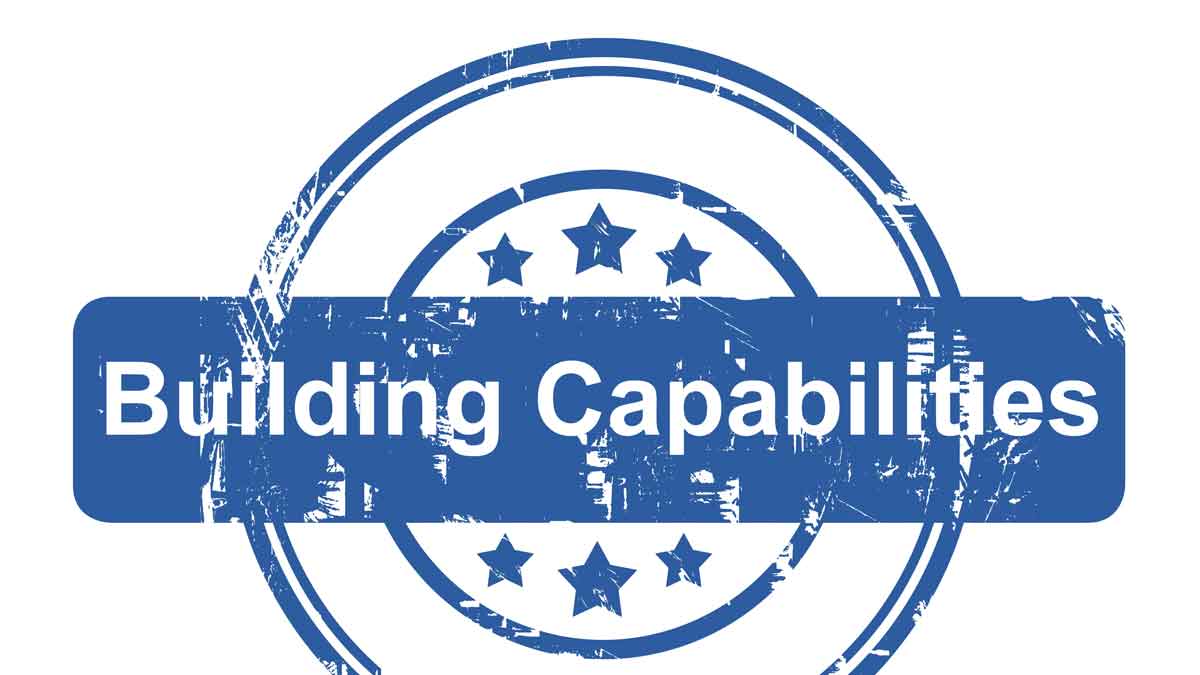One of our best innovations started as an experiment. In 2004 I projected my notes during a customer interview. The customer loved it, the meeting went far longer than expected, and we haven’t looked back since. Sure, customers can correct your notes this way, but our biggest discovery was that customers own what they create and can see. We’ve been calling these “Discovery” interviews ever since.
More in video, Reinventing VOC for B2B
Do you know if your company is improving key capabilities? Understanding customers’ needs, assessing competitive alternatives, creating data-driven value propositions, etc.? A race team that just counts wins—instead of pit crew times and engine torque—stops winning. Understand the capabilities that drive innovation and start measuring them.
More in Chapter 9 of Business Builders by Dan Adams
If you manage one new-product project, it seems less risky to develop a “me-too.” But if you manage a business brimming with “me-too” and incremental new products, you’ll slide into commoditization with its death spiral. Very risky. So make sure your portfolio has enough products that will deliver significant value to your customers.
More in 2-minute video at 42. Beware of new product incrementalism
Lean Startup methodology refers to “Leap of Faith Assumptions,” and recommends testing assumptions with customers at the first opportunity. For B2B, this “first opportunity” to learn comes before a prototype is created… through VOC interviews to mine the foresight of knowledgeable customers. Don’t miss this B2B adjustment to Lean Startup.
More in white paper, Lean Startup for B2B (page 6)
The annual B2B sales meeting is your perfect opportunity to revitalize sales efforts for next year. These are pivotal events for businesses looking to energize their sales teams, share industry insights, and drive growth. A successful conference can inspire, educate, and motivate attendees, improving performance and enhancing team cohesion. Consider incorporating these seven essential elements ... Read More
Avoid “technology push.” But should you just leave your technology quivering on the lab bench? Hardly. Conduct customer interviews without mentioning your technology. If customer outcomes match your technology… wonderful! Otherwise, look for different technology (for this market), or look for another market (for this technology).
More in 2-minute video at 21. Give your hypotheses the silent treatment
Here’s the logic: You want profitable, sustainable growth. The only way to achieve this growth is through customer value creation. And all value creation comes from improving important, unmet customer outcomes. So the better you understand customer outcomes, the better your growth can be. Are you doing this better than competitors?
More in e-book, Reinventing VOC for B2B
Technology development is science-facing and converts money into knowledge. Product development is market-facing and converts knowledge back into money. Both are critical, but don’t confuse them. And never do any product development until you have quantified, unbiased, unfiltered data on customer needs.
More in white paper, Commercialize technology in six foolproof steps
When recruiting John Sculley from Pepsi, Steve Jobs asked, “Do you want to sell sugar water for the rest of your life, or do you want to come with me and change the world?” Most employees paid no attention to your last quarter’s earnings-per-share. But they’ll tell the next generation how their new product turned an industry upside-down.
More in 2-minute video at 5. Shareholder wealth is a poor goal
In many areas of life, there’s the “old way” and the “new way.” Does your company still develop “hypotheses” internally, and then meet with customers to validate them? This can lead to confirmation bias for you and stifled yawns for your customers. In the “new way,” you start by uncovering customer needs, not by internally “ideating” your solutions.
More in e-book, Reinventing VOC for B2B
Nothing you do within your operation will achieve such growth, unless customer value is also created. With operational efficiency alone, you’re in a race to the bottom. Quality and productivity improvements are important… but in isolation eventually lead to commoditization, as you and competitors approach a point of diminishing returns.
More in 2-minute video at 8. Rethink your major initiatives
If your new product development process does not require customer interviews today, consider two questions: 1) Do I have competitors beating me to the new product punch because they are using such interviews to uncover market needs? 2) Could I leapfrog them by building a company-wide competency of B2B-optimized interviews?
More in e-book, www.reinventingvocforb2b.com
With a high-certainty project, you can accurately predict your financial profits. With an uncertain project, you face significant potential downside and upside profits. In B2B markets, you can understand the downside very early. You’ll kill the project cheaply if the downside cannot be eliminated. And reap big upside profits if it can.
More in white paper, Innovating in Unfamiliar Markets (page 5)
The research on B2B sales call preparation isn’t encouraging: 75% of B2B executive buyers say salespeople are not knowledgeable about their business and do not understand the issues they face.1 Unsurprisingly, only one in four salespeople get agreement from these buyers to meet again.2 Let’s see how the clever use of AI can change this. ... Read More














